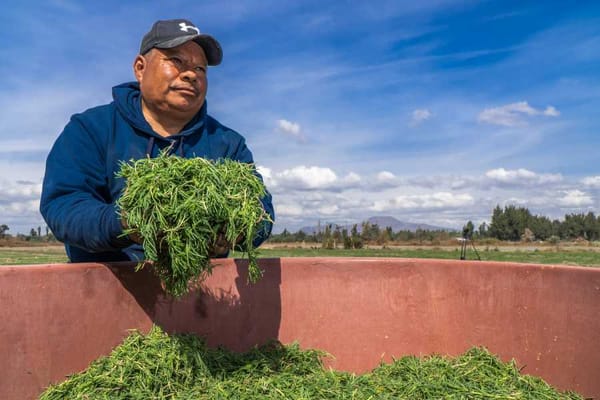Fall of the Great Tenochtitlan
On August 13, 1521, just 500 years ago, the indigenous city of Mexico-Tenochtitlan -today Mexico City- was captured after a state of siege and fierce battles that lasted for three months.

The ruins are the evidence of a civilization that existed in the past, the fall of Tenochtitlan began with the arrival of the Spaniards. Its conquest was not easy, the Spaniards had to fight to the death. It was a fight meticulously planned and executed by Hernán Cortés, some Spaniards and thousands of Indians resentful of the Mexica people, united to take over the great city of Tenochtitlan.
It was a difficult mission for Hernán Cortés, who was dedicated to administration, cattle raising, and agriculture back in Santiago de Cuba and went out to captain the expedition that he was to bring to the coasts of Mexico. He bet all his fortune on the enterprise. Cortés was not measured like Juan de Grijalba, who had already arrived before the Mexican coasts and who baptized the place as Santa María de las Nieves, a place that later Cortés called Veracruz, a name that has prevailed until our days. Grijalba did not decide to venture into the conquest of the discovered lands, unlike the captains who accompanied him, among them the participation of Pedro de Alvarado, who would later become Cortés' lieutenant.
Cortes left Havana on February 10, 1519, with 12 ships carrying 108 sailors, 508 soldiers, 32 crossbowmen, 13 shotgunners, and 11 captains; a total of approximately 673 Spaniards, accompanied by 200 Cubans. They also carried 16 horses and dogs, animals that played an important role in the conquest.
They were on their way to take possession of extensive lands in the name of the King of Castile, Charles I of Spain, who was elected emperor of Germany that same year at the age of 20 and who, it is said, did not even know of the existence of Cortes.
"Therefore the conquest of Mexico, like that of almost the entire New Continent, was essentially a private enterprise in which the State exercised only a nominal power, endorsing as a simple notary what had been consummated by the audacity and courage of those who participated with their own risk and fortune in the great adventure".
Already being in this land, the Spaniards took a great surprise when Motecuhzoma time later received them with great gifts, he sent them presents of gold, precious stones, and enormous colored feathers; when seeing this reception the Europeans were astonished because they did not expect to be received in this way.
After the great reception in Tenochtitlan by Motecuhzoma to Hernán Cortés in 1519, a series of unfortunate events was unleashed for the Mexica; that encounter marked the beginning of the fall of Tenochtitlan since the Spaniards were already in Mexican territory.
The Tlaxcaltecs put up resistance to the passage of the Spanish expedition, however, they were dominated due to the superiority of the European weaponry over the arrows and batons with obsidian points. Cortes had chosen this confrontation with a double purpose: not to leave his rearguard threatened when heading towards the capital of the empire and to try to win as allies the Tlaxcaltecs, who he knew were being plundered and abused by the Mexica. His plans worked out perfectly since, without the help of peoples who were tired of the affronts by the Mexica, the conquest of Mexico by Hernán Cortés would have ended perhaps in a different scenario.
Motecuhzoma Xocoyotzin confronted Cortés, however, he failed in the Cholula trap and saw no alternative but to present himself to Cortés. Later, Cortes took Motecuhzoma prisoner and, in this way, left the empire without a leader. Eventually, the Mexica, led by Cuitláhuac, expelled the Spaniards in a bloody battle in which Motecuhzoma was killed by the Europeans or perhaps by his people.
Cortes remained on Tlaxcalan soil for more than a year after the so-called "Sad Night", meticulously planning the final attack on the heart of the city of Tenochtitlan, regrouped his forces in Texcoco and laid siege to the city. He proceeded to demolish house by house as he went along. The new ruler, Cuauhtémoc (the falling eagle), was a 22-year-old young man who defended the city for 93 days, as Cuitláhuac had died of smallpox.
León Portilla in his writings describes from the Mexica vision, that a calamity struck Tenochtitlan: "because we suffered a new calamity: our people began to get sick. They were full of grains. They had a high fever and died. Thus died our new lord, Cuitláhuac, whom we had chosen after the death of Moctezuma. It was a disease that we did not know about in our land. It spread from one to another and many people died. Later we learned that it was called smallpox. One of the foreigners, sick, left us this disease".
After smallpox, the Spaniards returned. It had been almost a year since they had withdrawn. Cortés had reinforced his troops with about eighty thousand indigenous allies and hundreds of Spaniards recently arrived from Veracruz.
His allies brought the unarmed boats-the planks and ironwork across the mountains and armed them on the lake to fight our canoes. Meanwhile, most of the troops were on their way to Tenochtitlan. They crossed the lake by the three main causeways: Tacuba, Tepeyac, and Iztapalapa. One column was led by Pedro de Alvarado; the others by Captains Olid and Sandoval.
To repel the invaders, all the Mexica youth joined the fight. We made bows, arrows, slings, spears, darts, shields, batons, and padded shirts. We also prepared armed boats to attack the brigantines from them. Before beginning the attack, Cortés wanted to speak with our lord, Cuauhtémoc. The interview was south of the city. Cortés said he was coming to make war on Tenochtitlan.
He also made serious accusations and threats against the Mexica to get them to surrender. Cuauhtémoc stood firm and showed that he and his people were ready to fight.
"And we fought day after day, on the causeways, in the streets, from the roofs of our houses. Every house was cause for a rabid fight. Since Cuitláhuac had died, we were led by Cuauhtémoc, a young and brave warrior. He encouraged us when we were beset by hunger and thirst. Food did not reach our besieged city and it was impossible to drink the salty waters of the lake. Every day was to start the war all over again, almost in the same place."
In this way, Cuauhtémoc gave the last battle in Tlatelolco in which many Mexica preferred to die rather than surrender. Cuauhtémoc, the last Mexica ruler, was captured; he was later executed by Cortés during the expedition to Honduras.
The brigs could not enter the narrow channels. "The enemy penetrated many times by land. We broke the bridges so that the soldiers could not pass. But then they began to tear down the houses, and with the debris, they filled in the canals. Thus they made a way for their horses and troops to advance, and to be able to drag their cannons."
The war, the siege, and the ninety-day siege of Tenochtitlan in 1521 shape a new image of the city, the Third Letter of Relation of Hernán Cortés and the True History of Bernal Díaz del Castillo articulate the rhetoric of the war, extreme to unspeakable limits of ferocity and resistance on both sides. The idea was that, by ravaging Tenochtitlan and provoking the sudden collapse of the Tenochca military might.
According to some estimates, more than 200,000 people died in the conquest, the city was devastated by diseases introduced by the Spaniards, excessive tribute, forced labor, military defeat, and other events typical of battles.
"Neighborhood by neighborhood we lost the city. We were exhausted
and we took refuge in Tlatelolco. That was the last battle,
desperate. And we lost it.
On the roads lie broken darts; the hairs are scattered.
are scattered.
Roofless are the houses, reddened are their walls.
Worms swarm in streets and squares, and the walls are stained with brains.
stained with brains.
Red are the waters as if they had been dyed.
And if we drank it, it was the water of saltpeter.
We beat the adobe walls in our anxiety,
and we were left with a network of holes.
In the shields was our shelter;
but the shields do not stop the desolation.
Afterwards, in our lands a new story
new history... different.
Cuauhtémoc was captured by the Spaniards, which meant the definitive fall of Tenochtitlan, which culminated on August 13, 1521. From that moment on, the period known as the colony began, which lasted three centuries (1521-1821).
Tenochtitlan was renamed New Spain and European-style palaces were built on top of the ruins of the Mexica temples. The Aztec religion and culture were displaced by the Catholic faith, protected by the Inquisition Tribunal; however, some missionaries such as Fray Bernardino de Sahagún and his indigenous informants, as well as later historical studies, saved the great Mexica culture from oblivion.
Notes
Hernán Cortés was a nobleman from Medellín (Cáceres) who studied in Salamanca without much fruit, so he decided to embark for the Indies in search of fortune. He trained as a captain fighting against the rebellious Indians of the Spanish (Santo Domingo) and in the conquest of Fernandina (Cuba), small enemies that did not require a great display of military science. He married a lady named Catalina Suarez, nicknamed la Marcaida. He accumulated a fortune of some consideration to employing it in the conquest of new territories as head of the expedition.
Cuitláhuac was Motecuhzoma's brother to whom the Council of the Aztec Kingdom (Tlalocan) decided to transfer the power since he was in favor of the resistance against the Spaniards and was determined to defend the great Mexica empire, contrary to the decisions of his brother Motecuhzoma because he confused the Spanish presence with the god Quetzalcoatl and thought that they had come to rule. Cuitláhuac gave great battles against the Spaniards, to the extent that Cortés decided to flee, despite his deadly weapons, the plan did not work, he lost many men and the booty of gold they had accumulated, which they refused to part with. "The great triumph of November 8 in which Motecuhzoma hung a necklace of golden shells from Cortes' neck became the Sad Night of June 30, 1520."
Bibliography
Custodio Álvaro, Hernán Cortés y Moctezuma II, El mito que destroyed a great culture, moctezuma y cortes gredos.pdf
https://cutt.ly/jmMDRDC
León Portilla, Miguel La Conquista, Edit. Colibrí, Mexico, p. 25. at https://cutt.ly/PmMDHLi accessed February 27, 2021.
Pasztory Esther, "El arte mexica y la conquista española." pdf, https://cutt.ly/UmMD9F9
Source: INPI




